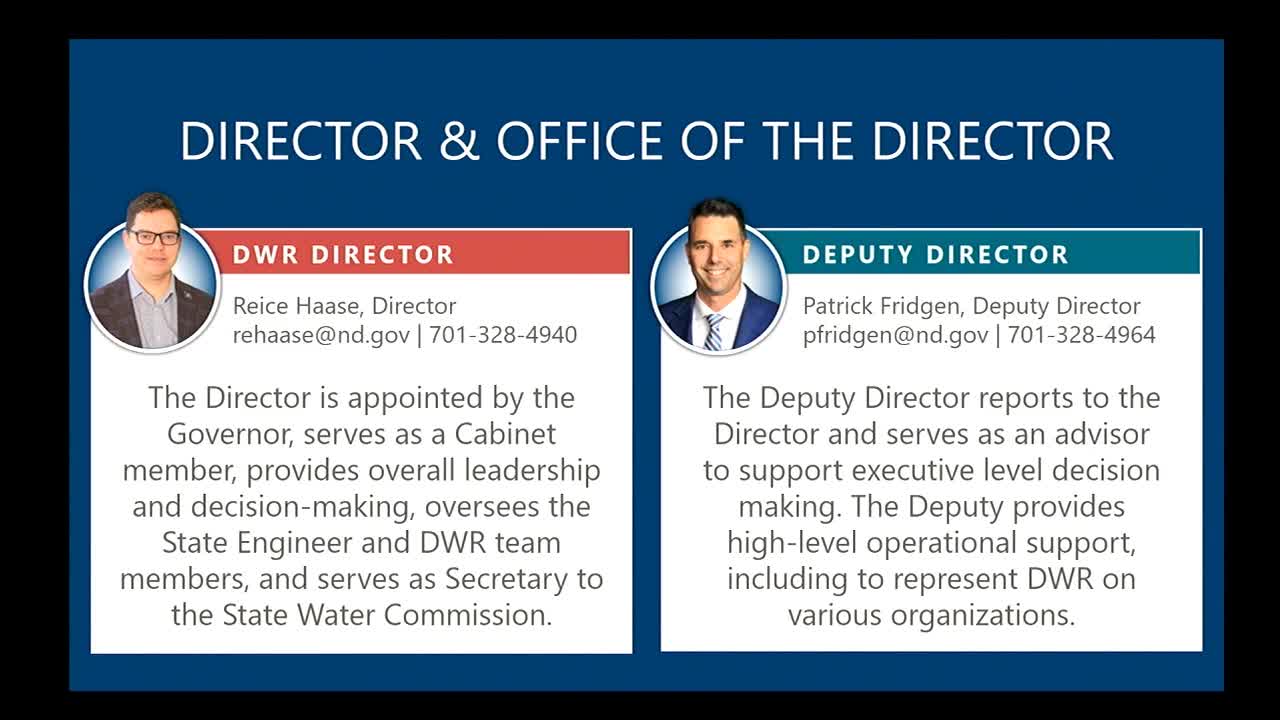North Dakota Water Resource Management Committee Discusses Devil's Lake and Treatment Projects
September 18, 2025 | Legislative, North Dakota
This article was created by AI summarizing key points discussed. AI makes mistakes, so for full details and context, please refer to the video of the full meeting. Please report any errors so we can fix them. Report an error »

A pivotal discussion on North Dakota's water management took place during the Water Topics Overview Committee meeting on September 18, 2025, highlighting the state's ongoing challenges and strategic initiatives. Central to the conversation was the management of Devil's Lake, a closed basin with no natural outlet, which has been a focal point for water quality and flood risk management.
Reese, a key speaker, reported that the state operates two outlets to mitigate flooding risks at Devil's Lake. However, due to high sulfate levels in the water, the outlets may need to be shut down for the season, limiting the state's ability to manage water levels effectively. This year, approximately 66,000 acre-feet of water were displaced, a significant figure but still a concern for local agricultural interests who feel underrepresented in water management decisions.
The committee also discussed the broader scope of North Dakota's water resources, noting that the state has over 60 million acre-feet of groundwater stored in its aquifers, though not all of it is suitable for use due to quality issues. The Missouri River remains the largest source of clean surface water, crucial for the state's water supply.
In addition to Devil's Lake, the meeting addressed the Northwest Area Water Supply Project, which aims to serve 81,000 future users by transporting water from Lake Sakakawea across the Continental Divide. This project is seen as a vital step in ensuring long-term water availability for communities in North Central North Dakota.
The discussions underscored the complexity of water resource management in the state, balancing environmental concerns, agricultural needs, and infrastructure development. As the committee moves forward, the focus will remain on addressing water quality issues and enhancing the state's water management strategies to meet the needs of its residents.
Reese, a key speaker, reported that the state operates two outlets to mitigate flooding risks at Devil's Lake. However, due to high sulfate levels in the water, the outlets may need to be shut down for the season, limiting the state's ability to manage water levels effectively. This year, approximately 66,000 acre-feet of water were displaced, a significant figure but still a concern for local agricultural interests who feel underrepresented in water management decisions.
The committee also discussed the broader scope of North Dakota's water resources, noting that the state has over 60 million acre-feet of groundwater stored in its aquifers, though not all of it is suitable for use due to quality issues. The Missouri River remains the largest source of clean surface water, crucial for the state's water supply.
In addition to Devil's Lake, the meeting addressed the Northwest Area Water Supply Project, which aims to serve 81,000 future users by transporting water from Lake Sakakawea across the Continental Divide. This project is seen as a vital step in ensuring long-term water availability for communities in North Central North Dakota.
The discussions underscored the complexity of water resource management in the state, balancing environmental concerns, agricultural needs, and infrastructure development. As the committee moves forward, the focus will remain on addressing water quality issues and enhancing the state's water management strategies to meet the needs of its residents.
View full meeting
This article is based on a recent meeting—watch the full video and explore the complete transcript for deeper insights into the discussion.
View full meeting
